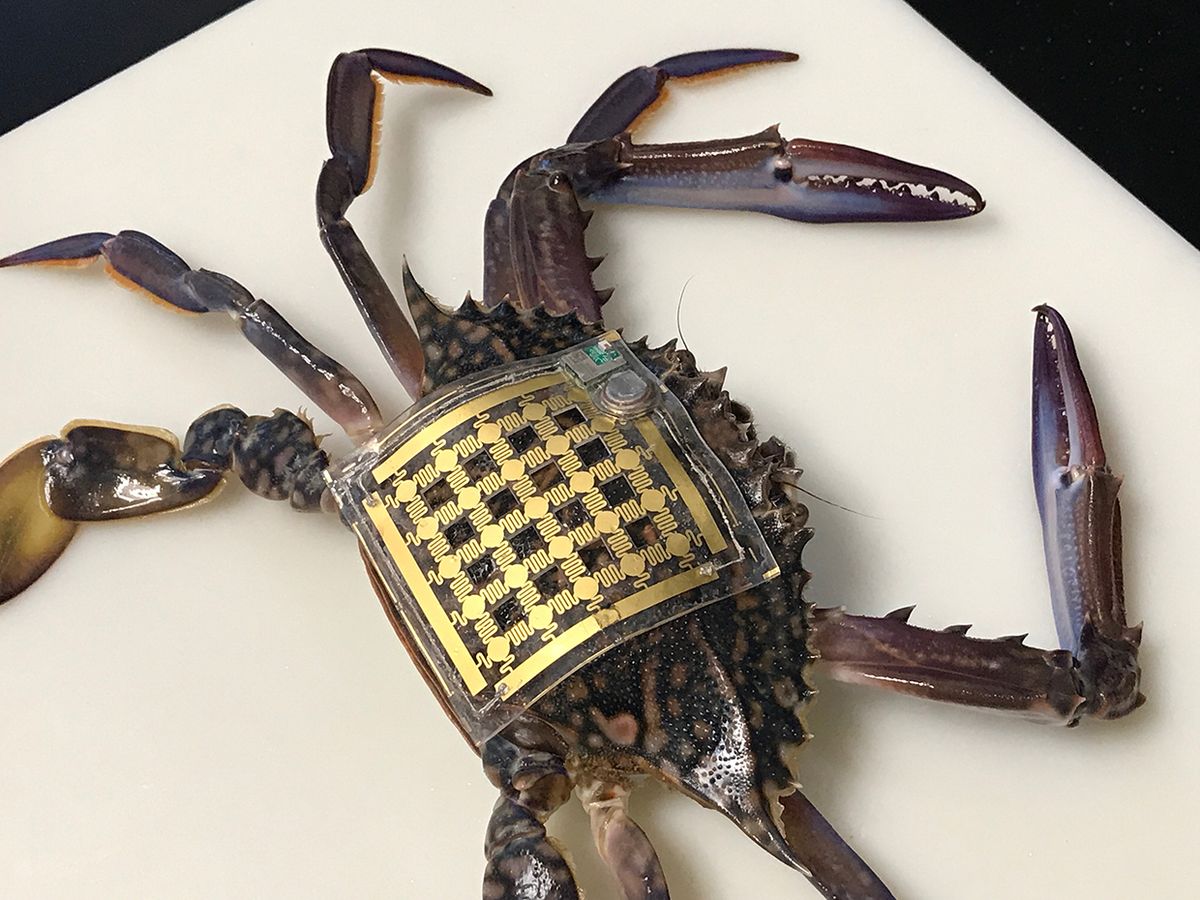Humans aren’t the only ones who deserve comfortable wearables that track physical activity. A crab unwittingly became the first test subject for a lightweight sensor tag that could track animal movements in deep ocean environments.
The “Marine Skin” tag can be glued to the outer shell or skin of an animal and weighs barely as much as a paper clip in water. All of that means the lightweight skin could theoretically be worn by a wide variety of both large and small marine animals without much disruption to their bodies or underwater behavior. The research team at King Abdullah University of Science and Technology (KAUST) in Saudi Arabia aims to help tag as many as 200 marine species with the device by the summer of 2019.
“I realized we could help marine species by developing comfortable and convenient wearables for them,” said Muhammad Mustafa Hussain, a professor of electrical engineering at KAUST.
Tagging and tracking marine animals has already come a long way. In the 1930s, researchers used shotguns to shoot stainless steel tubes—bearing an identification number and promise of reward for return—into whales that could be recovered after the marine leviathans had been killed and processed for their blubber. Modern electronics and radio tags have enabled more sophisticated tracking, even if researchers often still rely on invasive methods of darting or implanting marine animals with the tags.
But Hussain and his KAUST colleagues—working with scientists at the Red Sea Research Center—aimed to meet or beat the current standard for marine animal tagging in terms of non-invasiveness, weight, operational lifetime, and speed of operation. Their work will be detailed in an upcoming issue of the journal Flexible Electronics.

With a coin battery that could theoretically last up to a year, the prototype version of the tag can continuously track seawater salinity, temperature, and depth. A first swimming and diving trial with the blue swimmer crab—a creature captured on the east coast of the Red Sea—suggested a battery lifetime of five months without any optimization or changes to data logging frequency.
“This wearable was tricky to build as it has to sustain saline water and pressure associated with depth,” Hussain says. “Therefore, we resorted to materials which are low cost but mechanically compliant and can absorb the stress.”
The researchers primarily used copper, tungsten, and aluminum in the electronic components and a common silicone for the main body of the skin. Material and processing costs for the wearable system came to less than $12 per unit: much less expensive than existing marine tags.
One limitation comes into play when researchers want to collect the data stored on the Marine Skin. The current prototype relies on Bluetooth technology to transmit the stored data to smartphones. As part of such testing, the team performed a separate study that involved remotely gathering data from a shark at L'Oceanogràfic, an oceanarium near the city of Valencia, Spain.
A second generation version of the design could wirelessly transmit data whenever the animal host chooses to surface. Beyond that, Hussain suggested the possibility of using optical communication to gather data in underwater conditions.

Another unknown is the Marine Skin’s ability to survive deep sea conditions. The current testing system used by the KAUST researchers was only able to study the skin’s effectiveness in less than three feet of water (80 centimeters). Still, the KAUST researchers seem confident that the wearable can fare well in deeper water during future trials that would increase the testing depth to 1 kilometer.
Besides working with the Red Sea Research Center, KAUST has already begun distributing the current prototype to other marine ecology research groups. Future test subjects could include larger animals such as dolphins and whale sharks.
“The gathered data will be analyzed to preserve and to enhance the marine ecology not only in the Red Sea but anywhere in the world,” Hussain says.
Jeremy Hsu has been working as a science and technology journalist in New York City since 2008. He has written on subjects as diverse as supercomputing and wearable electronics for IEEE Spectrum. When he’s not trying to wrap his head around the latest quantum computing news for Spectrum, he also contributes to a variety of publications such as Scientific American, Discover, Popular Science, and others. He is a graduate of New York University’s Science, Health & Environmental Reporting Program.



